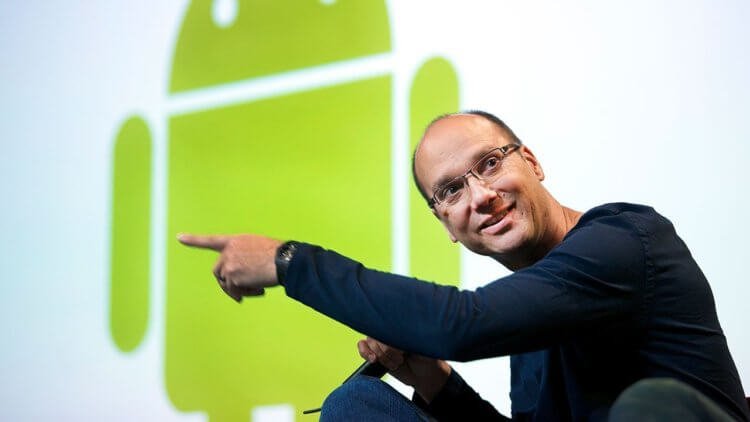Everyone knows about Android. Even those who do not use smartphones have heard about the existence of this platform. Well, let it be that for many the term itself Android is the antonym of the trademark iPhone, and not iOS, as it should be logically. In the end, this does not make either the operating system itself worse, nor the device whose performance it provides. However, if now these are mainly smartphones, then at the dawn of development Android it was intended not at all for them, but for digital cameras.

Android was not intended for smartphones from the word at all
The true purpose Android was told by Andy Rubin, who owns the operating system. It was he who was engaged in its creation before Google became interested in the project and bought it out, enticing Rubin himself to work. According to him, the initial plans to create Android, which then even had a different name, appeared at the very beginning of the 2000s. He brought it to investors, but could not get funding, and therefore was forced to abandon the idea, which was quite promising.
Operating system Android

Operating system for cameras? Why not
Rubin wanted to create a software platform for digital cameras that would allow them to connect to the Internet and store all of their photos in the cloud. As a result, users could take snapshots that would be automatically uploaded to a remote server, and still have regular access to them. This would make it possible to permanently abandon memory cards, which, firstly, tend to run out, and, secondly, they fail from time to time, virtually killing all the contents without the possibility of recovery.
Nevertheless, all attempts to convey to investors the prospects of the project turned out to be a failure. Still, the digital camera market was not large enough even at that time. Therefore, Rubin and his team were forced to change strategy, focusing on the growing smartphone market. They decided that they would distribute the platform for free and make money by selling applications, games and services. So Rubin planned to take over the market, as their competitors like Nokia and Microsoft demanded a fee to be able to use Symbian and Windows Mobile.
Phone from the creator of Android

Essential Phone is Andy Rubin's new brainchild, which, unfortunately, didn't fly
As Android was created, investors began to take interest in the operating system, but Rubin gave preference to Google as the most solvent company. As a result, the startup was completely bought out by the search giant in 2005, with its founder joining the company as senior vice president of mobile and digital content. Google planned with his direct participation to popularize Android and over the next five years to occupy 9% of the mobile operating system market. But this forecast turned out to be too pessimistic, because already in 2010, Android occupied almost 24% of the market in North America, and currently its share is 80%.
Andy Rubin has long left Google and is developing his own projects that have a very indirect relationship to Android. For example, in 2015 he created a startup Essential, which in two years developed and released his first smartphone called Essential Phone. It had a rather attractive and futuristic design by the standards of the time and the beginnings of a modular design, to which external accessories could be attached, expanding its functionality. However, in 2020, the company, without finding success, closed.
